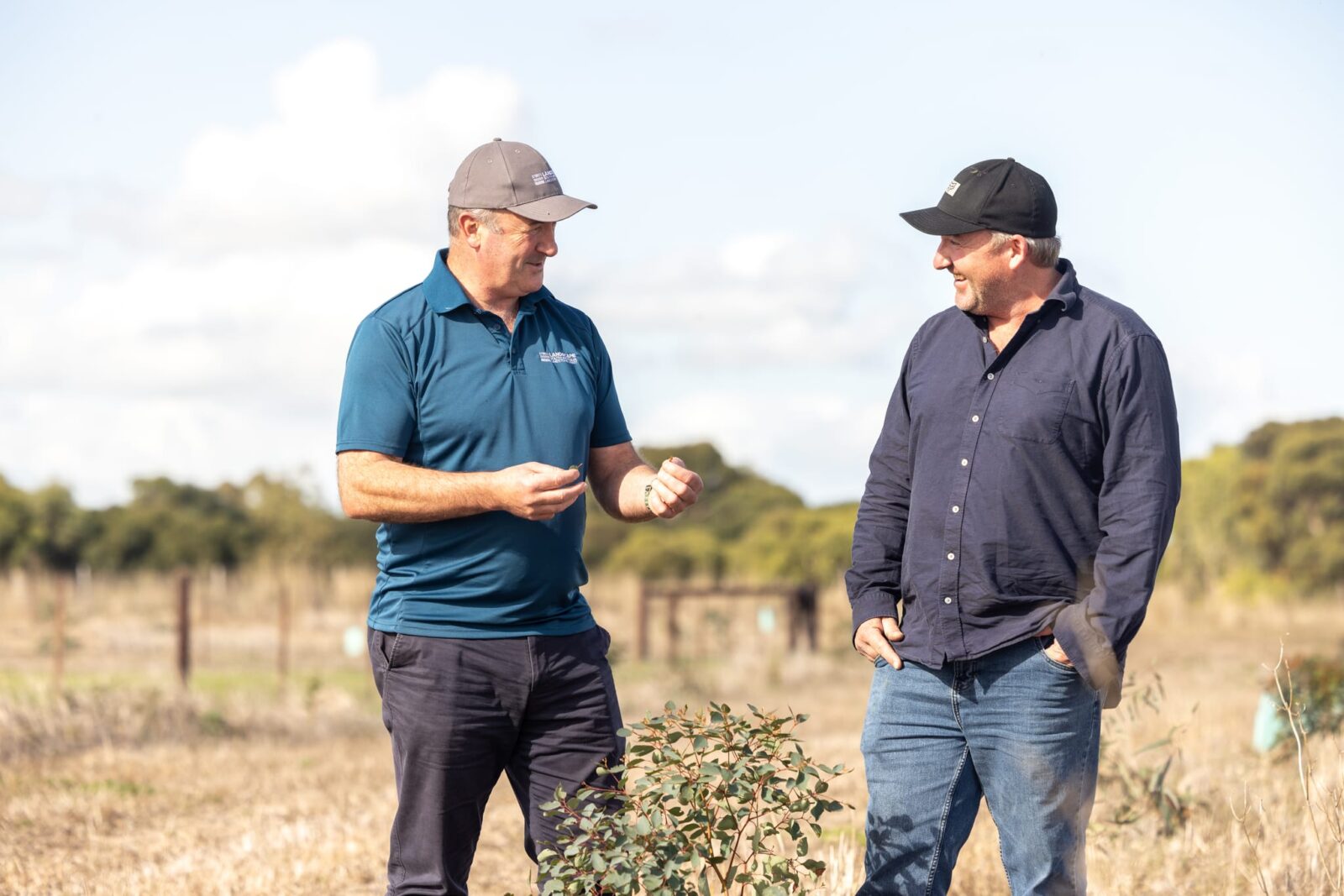How Isabelle Duff aims to drive genetic innovation in agriculture
 NATIONAL CHALLENGES AND OPPORTUNITIES / Monday, 20 November 2023
NATIONAL CHALLENGES AND OPPORTUNITIES / Monday, 20 November 2023
How to break down the barriers to carbon farming

In findings that could have a profound impact on the understanding of how farmers approach carbon management, research funded by AgriFutures Australia has found they are less motivated by the allure of carbon credits than the improvement to farm productivity that comes from increasing soil organic carbon.
The finding challenges the notion that carbon credit income has been a primary motivator and was one of the many insights that flowed from the $2m Carbon Initiative Program, which funded 15 research projects across the country to examine barriers to carbon farming and identify practical solutions.
AgriFutures Australia General Manager, Rural Futures, Michael Beer, said with more than half the land mass managed by farmers, Australia was in a unique position to sequester carbon in soils and vegetation, and avoid or reduce greenhouse gas emissions through established or novel management practices.
“What the research from the Carbon Initiative Program projects has told us is there are number of factors including perceived complexity and risk, the cost of soil sampling, not knowing which information to trust, and how information is communicated.
“Multiple research projects have found that farmers are more interested in carbon farming when they know that increasing soil organic carbon has an impact on farm productivity. The potential to earn carbon credits is really just a co-benefit. This is an important message for decision makers and policymakers. So too is the importance of improving knowledge in what is a complex space and having the tools to assess risk.”
Some of the key outcomes and insights from the Carbon Initiative Program include:
- Farmers are hungry for knowledge. Limestone Coast Landscape Board has developed educational resources and even done free soil carbon measurements for some producers, after finding farmers in the SA region are keen to learn more about carbon farming but not sure who to trust.
- Confusion abounds. The Australian Farm Institute described the carbon market as a “confusopoly” for farmers so has developed an online decision-making tool to help weigh up the risks and benefits of different carbon farming options.
- Economic sustainability is critical. Wimmera Development Association conducted interviews across the region and found little interest in carbon farming where the primary purpose was reducing emissions, with adoption instead driven by the search for increased productivity and profitability.
• Soil health trumps carbon credits. In interviews conducted by University of Technology Sydney farmers spoke about enhancing soil carbon as a win-win for agriculture and the environment, with a tendency to cite the productivity benefits for their farming enterprise before discussing the income from carbon. - Psychological nudges. Queensland University of Technology examined carbon farming through the lens of behavioural economics and found it would only take a few documented success stories of carbon farming in each region to convince others to take up the practice.
- Big companies making the switch. Common Capital found large companies are increasingly looking for low-emission farmers and suppliers and recommended farmers communicate with their value chain about carbon projects.
- Rural valuers need help. Carbon Market Institute found no professional guidance for rural valuers with regard to carbon project valuation, leading to a lack of consistency and comparability. A guidance paper was developed.
- How to overcome negative experiences. Interviews with landholders in Southern Queensland (home to almost a quarter of carbon projects nationwide) found negative experiences with carbon farming due to historic arrangements where conditions covered the entire property, required total destocking and contained permanence periods of 25 years or more, with researchers recommending education and promotion of arrangements which allowed limited stocking.
“The Carbon Initiative Program is a comprehensive and ambitious attempt to understand what is driving carbon farming in Australia and what could be done to increase the awareness of the benefits and risks of carbon management to allow farmers to make their own informed choices,” Mr Beer said.
“We hope the learnings from these projects will lay a foundation for future research, deepen the knowledge in our agricultural sector and be a step towards helping in efforts to mitigate the effects of climate change.”
To review the findings of all 15 projects, visit the AgriFutures Australia website.
To stay up to date with the latest on these and other important programs, subscribe to the AgriFutures Australia newsletter here or follow AgriFutures Australia on social media.
Media enquiries:
Matt Wordsworth
0404 029 241
Latest News
-
How Isabelle Duff aims to drive genetic innovation in agriculture WORKFORCE AND LEADERSHIP / 20.11.23
WORKFORCE AND LEADERSHIP / 20.11.23 -
AgriFutures Australia welcomes new Chairman CORPORATE / 20.11.23
CORPORATE / 20.11.23 -
Protecting Australia's beekeeping future through smart traceability HONEY BEE & POLLINATION / 20.11.23
HONEY BEE & POLLINATION / 20.11.23 -
Meet your future agronomists: The five Horizon Scholars getting a career head start WORKFORCE AND LEADERSHIP / 20.11.23
WORKFORCE AND LEADERSHIP / 20.11.23






